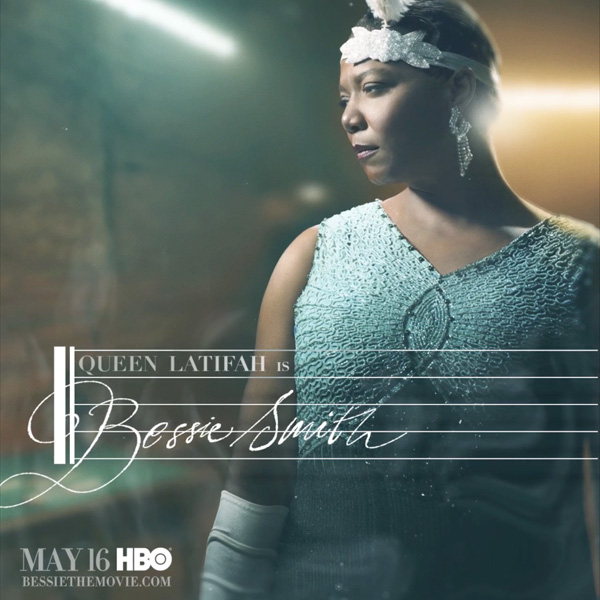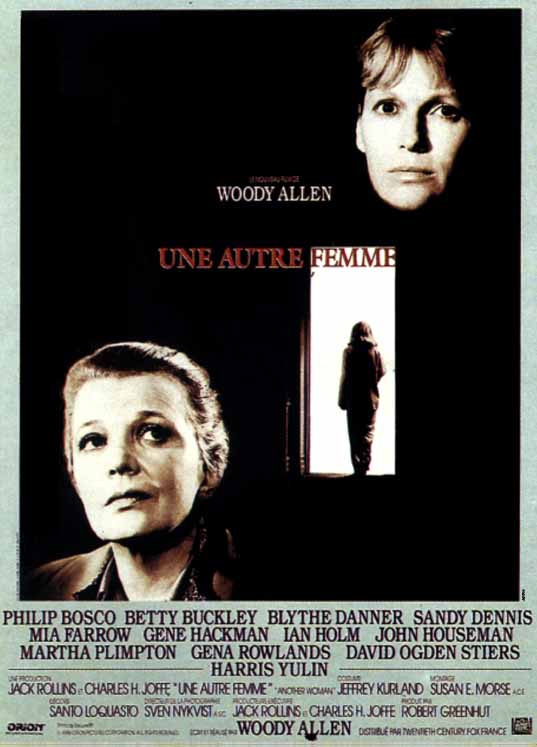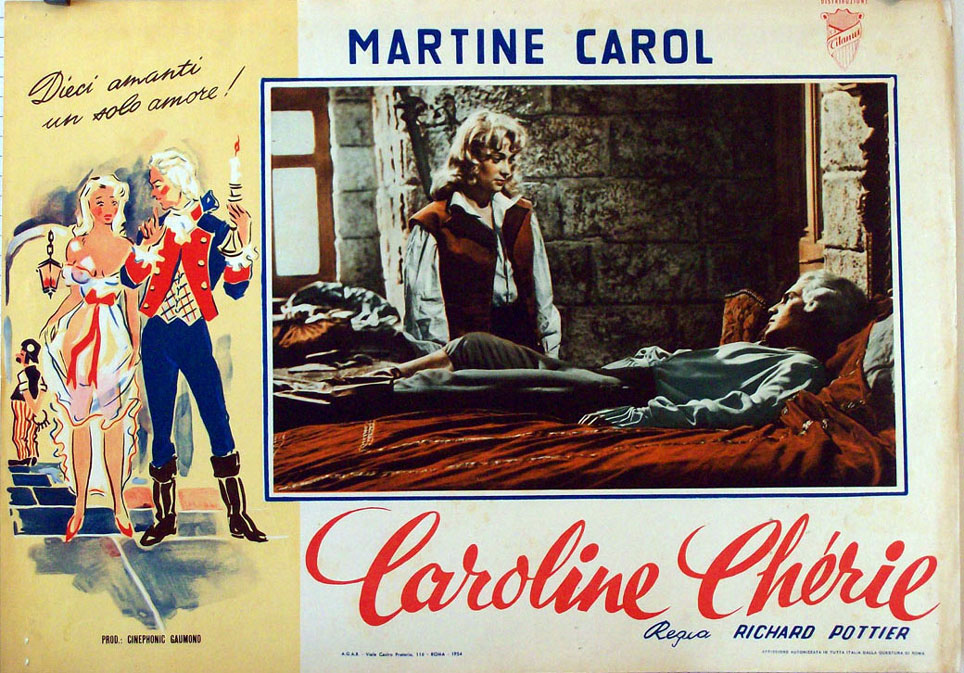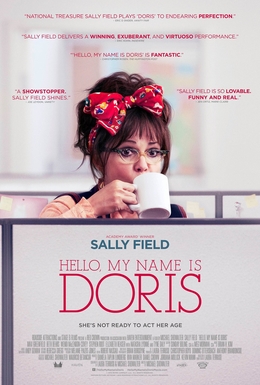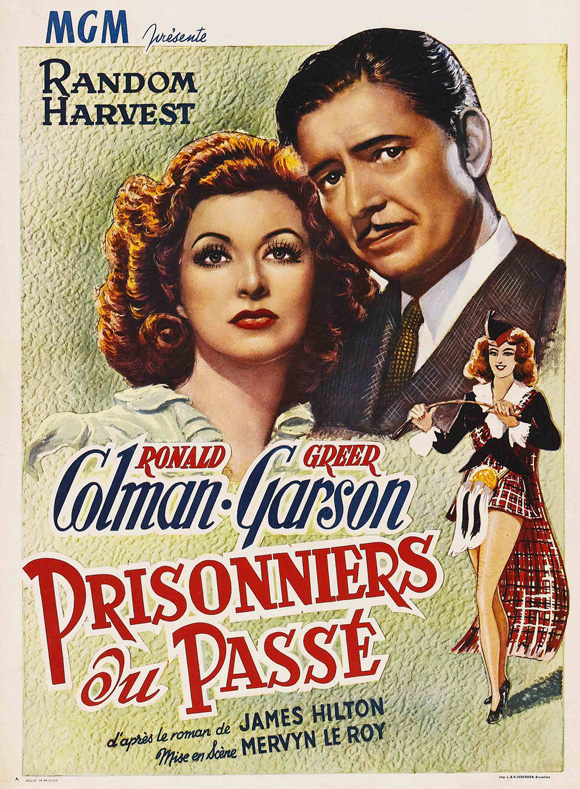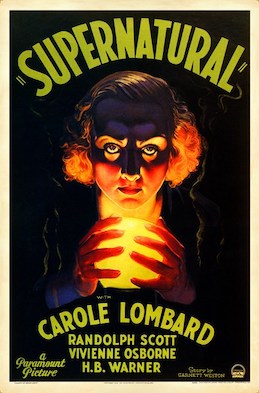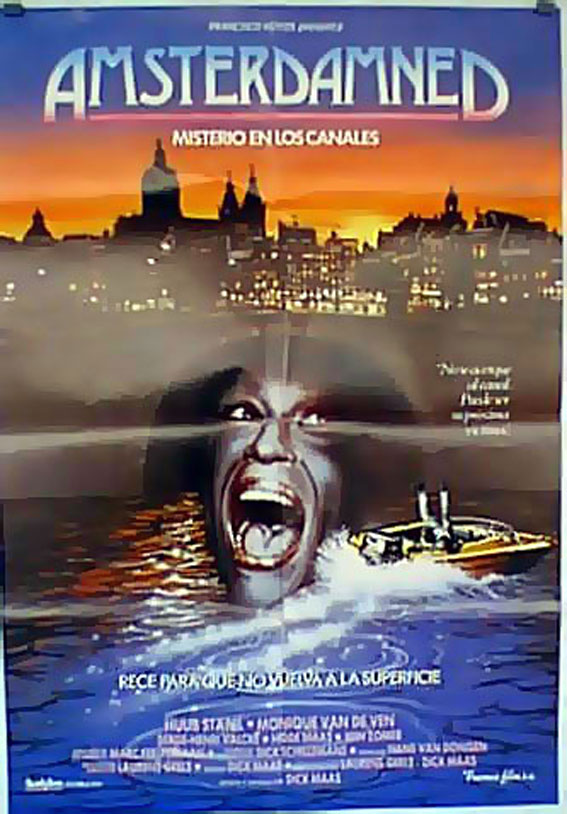Search This Blog
Thursday, March 31, 2016
The Girl Most Likely (1958)
Il Giardino Dei Finzi Contini (aka Garden Of the Finzi Continis) (1970)
Wednesday, March 30, 2016
Die Austernprinzessin (aka The Oyster Princess) (1919)
The daughter (Ossi Oswalda) of the wealthy "Oyster King" (Victor Janson) throws a fit destroying furniture because she is yet unmarried and not only that, but she wants to be married to royalty. To this end, her father hires a matchmaker (Max Kronert) to find her a suitable match. This zany comedy directed by Ernst Lubitsch is a mish mash of slapstick and sophisticated farce. Chaplin meets Feydeau so you're not supposed to look for logic or realism in the plot. The visual highlight of the film is probably the delightful wedding feast's foxtrot sequence but there's much to appreciate in this confection. At a brief running time of just over an hour, less is more. A fine example of the Lubitsch touch. With Harry Liedtke as the Prince and Julius Falkenstein as his best friend.
Tuesday, March 29, 2016
Amityville 4: The Evil Escapes (1989)
A woman (Peggy McCay) in New York buys an ugly lamp as a gag gift for her sister (Jane Wyatt) in California. What she doesn't know is that the lamp came from the infamous Amityville "horror" house and that a demon (Satan?) is using the lamp as a means of escape. When the lamp arrives in California, horrible and inexplicable things start to happen. The 4th entry in the AMITYVILLE HORROR franchise was made for TV (it debuted on NBC) rather than cinemas. The surprise is that it's far more enjoyable than the 2nd and 3rd entries in the series. It's a potboiler to be sure but the director Sandor Stern, who wrote the screenplay for the original 1979 film, has concocted a tight rapid film that barges its way through the inherent silliness of the plot (a killer lamp?) even if its last few moments are too silly and way too obvious. Despite the AMITYVILLE connection, the film owes more to THE EXORCIST than AMITYVILLE. Strong performances by Patty Duke (who died yesterday), Jane Wyatt and Fredric Lehne as a priest give the telefilm a step up. With Norman Lloyd, Lou Hancock and Zoe Trilling.
Mark Of The Vampire (1935)
After an aristocrat (Holmes Herbert) is found dead with two small wounds on his neck, the attending doctor (Donald Meek) and the murdered man's friend (Jean Hersholt) suspect it is the work of a vampire. Namely the Count (Bela Lugosi) or his daughter (Carroll Borland) who live in a nearby castle. Directed by Tod Browning (FREAKS), this is a loose remake of his 1927 silent film LONDON AFTER MIDNIGHT. All the proper elements are in place: the atmospheric B&W cinematography of James Wong Howe, the detailed art direction by Cedric Gibbons and the gowns by Adrian. But Lugosi is given very little to do until the very end. The film's ending is either very clever or a cheat depending on how faithful you want your horror films to be to the genre. I was rather let down myself but have to admit it was different than your usual vampire movie. Whatever one thinks, it remains a curiosity of the genre. Apparently some 20 minutes were cut from the film before it was released. With Lionel Barrymore, Elizabeth Allan and Lionel Atwill.
Has Anybody Seen My Gal? (1952)
Monday, March 28, 2016
Blood And Sand (1941)
A young boy (Rex Downing) runs off to Madrid with a dream to become a great matador. Ten years later, he (now Tyrone Power) is one of the most promising bullfighters and greatness lies before him ... if he doesn't self destruct. Based on the 1908 novel by Vicente Blasco Ibanez, this is the third film version of the novel. First filmed in 1916 and more famously later in 1922 with Rudolph Valentino. Directed by Rouben Mamoulian, this version is perhaps most famous for its stunning use of color and its two cinematographers (Ray Rennahan, Ernest Palmer) won Oscars for their work here. The first 22 minutes of the film dealing with the boy are execrable but once past that point, things pick up. Power never rises above adequate but there's a sincerity in his performance that can't be overlooked. Rita Hayworth as the film's femme fatale is ravishing here and even Linda Darnell, normally a great beauty in her own right, pales in comparison though to be fair, Travis Banton's frumpy costumes don't do her any service. Thankfully the film doesn't romanticize bullfighting (a barbaric sport). With Anthony Quinn, Laird Cregar, Lynn Bari, Alla Nazimova, John Carradine and J. Carrol Naish.
What Ever Happened To Aunt Alice? (1969)
A well bred and genteel widow (Geraldine Page) living in a small Arizona desert community is quite proud of her garden of pine trees, cactus and flowers. Also buried in the garden are the bodies of several housekeepers! Based on the novel THE FORBIDDEN GARDEN by Ursula Curtiss and produced by the director Robert Aldrich, this is yet another entry like Aldrich's WHATEVER HAPPENED TO BABY JANE? and HUSH HUSH SWEET CHARLOTTE pitting two "mature" actresses opposite each other in the horror thriller genre. What elevates this contribution is the acting, notably Geraldine Page. Page isn't the kind of actress to walk through a role and here she plays her role with all the relish of a Tennessee Williams heroine even as the film itself spins out of control toward a ludicrous climax. But it's great fun and Ruth Gordon as Page's latest housekeeper doesn't let Page take anything away from her, she holds her own. Directed by Lee H. Katzin. With Rosemary Forsyth, Robert Fuller, Mildred Dunnock, Claire Kelly, Peter Bonerz and Valerie Allen.
Sunday, March 27, 2016
Quien Puede Matar A Un Nino? (aka Who Can Kill A Child?) (1976)
An Englishman (Lewis Fiander) and his pregnant wife (Prunella Ransome) are on vacation in Spain in a seacoast town. They decide to take a boat trip to a small island a few hours away but when they arrive, they find the village seemingly deserted except for the children. It isn't long before they discover the horror of what happened to the adults. This Spanish horror film directed by Narcisco Ibanez Serrador is like THE BIRDS but with children instead. It's a disturbing film on several levels. Serrador opens his film with an under the credits montage of the horrors inflicted upon children during the Holocaust, the Viet Nam conflict, African tribal wars etc. But considering what follows, the footage seems both exploitative and disingenuous. That being said, as far as "killer children" (a disreputable genre to be sure) movies go, this is one of the best and very effective. The children know that the societal anathema towards harming children allows them to act out their pre-pubescent Manson family act. The film brings up a myriad of moral and ethical dilemmas that would take more space than I can spare here but it's fascinating film of its kind.
Saturday, March 26, 2016
Bessie (2015)
The story of blues singer Bessie Smith (Queen Latifah) from being discovered and mentored by Ma Rainey (Mo'nique) through personal success and struggles. Directed by Dee Rees, this is a superior biopic. These rags to riches movie biographies are usually full of cliches interspersed with career highlights and lows. While BESSIE doesn't quite avoid the traps inherent in the genre, it attempts to give us a detailed account of the times and atmosphere of the black artist in the 1920s and 30s and it's eerie how some things never change: many producers weren't keen on Smith because she wasn't "light" enough. But like most of these filmed biographies much of the film rests on the performance of the actor playing the central role and here, BESSIE comes up a winner. Queen Latifah is just amazing! Rees and her co-screenwriters (Christopher Cleveland, Bettina Gilois) wisely don't try to cram an entire lifetime into under two hours yet it doesn't seem underdeveloped either. I was glad the film ended on a positive moment in Smith's life and didn't take us all the way to her tragic death (an auto accident). Excellent performances all around including Michael K. Williams, Mike Epps, Khandi Alexander and Oliver Platt
.
Henry & June (1990)
Paris, France in 1931. The writer Anais Nin (Maria De Medeiros) meets the American writer Henry Miller (Fred Ward) who is working on his first novel. She is attracted to his rough manner and Bohemian lifestyle and when she meets his wife June (Uma Thurman), she becomes even more involved. Loosely based on the writings of Anais Nin and her relationship with Henry Miller (TROPIC OF CANCER) and his wife, June. The director Philip Kaufman had scored a great critical success with UNBEARABLE LIGHTNESS OF BEING three years earlier which dealt with a man's complicated involvement with two women. The narrative here is similar although the emphasis this time is not with the man but with a woman (Anais Nin). It's nowhere near as successful. The film was slapped with an NC-17 rating but for all the sex on display in the film, it's surprisingly unerotic and stilted. Ward is terribly miscast as Miller and plays him like Popeye with his line readings particularly flat. The film comes to life only when Uma Thurman is on screen which isn't nearly enough. It's a great looking film thanks to Philippe Rousselot's Oscar nominated cinematography. With Kevin Spacey and Richard E. Grant.
Friday, March 25, 2016
Forever Female (1953)
The Stork Club (1945)
A struggling singer (Betty Hutton) who works at the posh Stork Club in New York saves a drowning man (Barry Fitzgerald). He turns out to be a millionaire and in gratitude, he anonymously rewards her with a chic apartment, a fat bank account and charge accounts at expensive department stores. I doubt many people today even know what the Stork Club (a real nightclub) represented to 1940s movie audiences. It represented the epitome of swanky Manhattan social night life. So a movie built around the Stork Club would seem to have a built in appeal. The manic Hutton is an acquired taste (one I've never quite cultivated) but I'll take her frenzied manner over Fitzgerald's Irish pixie act which gets old very quickly. The film is a piece of lightweight fluff with some songs including two which became signature tunes for Hutton: Doctor, Lawyer, Indian Chief and I'm A Square In The Social Circle. It's the kind of movie that's as clear as the label on the can so you should know if it's something you want to invest your time in. Directed by Hal Walker. With Don DeFore, Robert Benchley, Iris Adrian, Andy Russell and Bill Goodwin.
Thursday, March 24, 2016
Born Free (1966)
After killing a man-killing lioness in self defense, a game warden (Bill Travers) returns to camp with the lioness's three cubs. His wife (Virginia McKenna) raises them but becomes attached to the smallest cub she calls Elsa. When the other two are sent off to zoos, Elsa is kept but as she grows into adulthood, it becomes clear that she must either go to a zoo or returned to the wild. But as a tamed cat, how will she survive? Based on the non fiction novel by Joy Adamson, this is one of the best animal movies ever made. Filmed entirely in Kenya and lovingly shot by Kenneth Talbot, the film has a nice authenticity to it. The relationship between the Adamsons seems natural and unforced which is not surprising as McKenna and Travers were married to each other in real life. The movie manages not to veer off into sentimentality while still tugging at our tear ducts. An intelligent animal film for the whole family. John Barry's underscore won an Oscar as did his title song. Sadly, the Adamsons separated eventually and were murdered in separate incidents. With Geoffrey Keen and Peter Lukoye.
Girls' Dormitory (1936)
In a Swiss school for girls, a young teenaged French student (Simone Simon) falls in love with the older director (Herbert Marshall) of the school. A teacher (Ruth Chatterton) at the school is also in love with the director but he is unaware of either woman's feeling for him. Someone will end up getting hurt. Directed by Irving Cummings, this minor 20th Century Fox effort introduced the French actress Simone Simon to American audiences who would do a few more films for Fox before returning to France to score her greatest success in Jean Renoir's LA BETE HUMAINE. It's an unsettling film in many ways. The rigid morality of two of the school's teachers (Constance Collier, J. Edward Bromberg) who overreact to a young girls' innocent love letter and want her expelled seems so inexplicable today. Perhaps the most disturbing element is the film's ending which goes the very opposite of how you expect it to end. My favorite performance was Chatterton who gives a rather touching portrait of a woman quietly suffering from unrequited love. The film also features a very early performance by Tyrone Power who comes in the film's last 7 minutes and has about 3 lines. With John Qualen and Frank Reicher.
Wednesday, March 23, 2016
Red Sun (1971)
Another Woman (1988)
A philosophy professor (Gena Rowlands) is in a seemingly happy marriage but a chance encounter with a troubled stranger (Mia Farrow) starts her seeing things more clearly ..... and she doesn't like what she sees. One of Woody Allen's most underrated films, it may be my favorite of his "serious" films. Allen is, once again, influenced by his idol Ingmar Bergman but it doesn't seem as self consciously Bergmanian like INTERIORS. There's a transparency and grace that Allen doesn't always display in his work. It's also interesting to see Rowlands portraying a cerebral somewhat repressed woman, the antithesis of the "on the verge" high strung characters she often played in her work with John Cassavetes. Normally I'm not a fan of Allen's "music from my record collection" underscores but he makes excellent use of Satie's Gymnopedie No. 1. The large cast includes Gene Hackman, Blythe Danner, Ian Holm, John Houseman, Martha Plimpton, Harris Yulin, Frances Conroy, Betty Buckley, Philip Bosco and in the film's best performance, Sandy Dennis.
Tuesday, March 22, 2016
Caroline Cherie (1951)
On the eve of the French Revolution, a young girl (Martine Carol) of the French aristocracy falls in love with a handsome womanizer (Jacques Dacqmine). But the bloody French revolution parts them and she must endure much to save herself from the guillotine. Based on the 1947 historical novel by Jacques Laurent, the overlong film (it runs over the 2 hour mark) resembles one of those Harlequin paperback romances. Martine Carol's Caroline, like Dickens' little Nell, suffers and suffers until reunited with her lover for a happy ending. But it's very difficult to sympathize with our heroine. She's a spoiled brat of the French aristocracy, there's a reason the French overthrew their nobles. When advised that the Jacobins are on their way and to flee immediately, her first response is, "What about my jewels and gowns?". She uses people to fulfill her own needs even if its to their detriment. Yet somehow we're supposed to admire her tenacity. The film is notable for its day in its near nudity, sexual encounters and rape. Directed by Richard Pottier. With Marie Dea, Jacques Clancy and Raymond Souplex.
Monday, March 21, 2016
The Comancheros (1961)
Sunday, March 20, 2016
The Girl In The Red Velvet Swing (1955)
A young showgirl (Joan Collins) begins an affair with a well known married architect (Ray Milland). When she realizes he will never leave his wife, she accepts the marriage proposal of a wealthy but mentally unstable young man (Farley Granger) and thus the ingredients of one of the biggest scandals of its time, 1906. Based on the sensational murder and trial of millionaire Harry K. Thaw who shot the famed architect Stanford White over his wife Evelyn Nesbit who had once been White's mistress. The story is also part of the novel and film RAGTIME for which Elizabeth McGovern received an Oscar nomination playing Evelyn Nesbit. It gets the full lush 20th Century Fox CinemaScope treatment with impressive art and set direction and costumes. The screenplay by Walter Reisch and Charles Brackett is pure melodrama however. One doesn't come away with the feeling that they've seen something akin to how it actually was in spite of the fact that the real Evelyn Nesbit was still alive at the time of filming and was a technical adviser on the movie. It's entertaining enough though. Directed by Richard Fleischer. With Glenda Farrell, Luther Adler, Gale Robbins and Cornelia Otis Skinner.
Hello, My Name Is Doris (2016)
A lonely 60ish woman (Sally Field) with psychological problems becomes obsessed with the handsome hunk (Max Greenfield, TV's NEW GIRL) that just started working at her office. A story about a psychologically disturbed 60ish woman stalking a 20 something hunk might have made for a crackerjack thriller but as a heartwarming comedy, it's too creepy. Still, it's more realistic than HAROLD AND MAUDE. For Sally Field fans only (I'm not one of them) but that being said, she's excellent here. In fact, her performance is the only reason to bother with this formulaic concoction. To be fair, the film scores some points about ageism in contemporary society and for that reason, I wish it were a better movie but it's just too obvious and manipulative. It's based on a short (9 minutes) film written and directed by Laura Terruso which I haven't seen and expanded to feature length by Terruso and the film's director, Michael Showalter. With Tyne Daly, Peter Gallagher, Wendi McLendon Covey, Kyle Mooney, Stephen Root, Natasha Lyonne and Caroline Aaron.
Saturday, March 19, 2016
Death And The Maiden (1994)
Several years after the fall of a fascist regime in an unnamed Latin American country, a woman (Sigourney Weaver) is shattered when she recognizes the man (Ben Kingsley) who brings her husband (Stuart Wilson) home after his car has a flat tire. She is convinced he is the man who repeatedly tortured and raped her when she was a political prisoner of the former regime. But is he? Or is he an innocent victim of her unstable mind? Based on the play by Ariel Dorfman and directed by Roman Polanski, this three character stage piece retains its claustrophobic intimacy yet remains a potent cinematic experience. Polanski seems to have a knack for these intimate plays to screen adaptation, his film of CARNAGE (which only had 4 characters) was very good too. The play ended on an ambiguous note, never revealing the truth. The film gives us the catharsis of knowing the truth although a weak argument could be made that it also is ambiguous. The acting is first rate with Weaver giving one of her best ever performances. A minimal underscore by Wojciech Kilar is quite effective.
Thursday, March 17, 2016
Les Grandes Personnes (1961)
Married To The Mob (1988)
The Disorderly Orderly (1964)
Wednesday, March 16, 2016
Rembrandt (1936)
Jungle Heat (1957)
Set in the days prior to the attack on Pearl Harbor, an American (Glenn Langan) is sent to Hawaii to oversee labor disputes between plantation owners and workers. He assumes the disputes are the work of a political agitator (Glenn Dixon) but a local doctor (Lex Barker) suspects it is the work of Japanese fifth columnists preparing the way for a Japanese invasion. Although made in 1957, the film has the air of a WWII propaganda movie made some 15 years earlier. What sets it apart is the film's more contemporary look at the American's racism toward the island's non Caucasian inhabitants, who he sees as lazy and needing a strong authority figure to push them. There's also an interesting look at an interracial marriage between a white policeman (Rhodes Reason) with a Japanese wife (Miyoko Sasaki), who are shunned. But it all boils down to being a "B" programmer with ambitious aims that are never realized. There's a nice underscore courtesy of Les Baxter. Directed by Howard W. Koch. With Mari Blanchard as Langan's unhappy wife and James Westerfield.
Tuesday, March 15, 2016
The Stranger (1946)
A government agent (Edward G. Robinson) on a war crimes commission arranges for the release of a Nazi criminal (Konstantin Shayne) in the hopes he will lead them to bigger fish. Namely, a Nazi war criminal (Orson Welles, who also directed) now living under an assumed identity in a quiet Connecticut town. This was Welles' most commercial film and indeed, reputedly the only film he made which showed a profit at the box office in its original release. While many are too quick to dismiss it as a "director for hire" project because it isn't one of his personal films, in actuality he had some control over the project. It's rather a good taut noir-ish thriller. It was the first Hollywood film to actually show footage of the concentration camp atrocities. The great Russell Metty, who would later shoot Welles' TOUCH OF EVIL, creates a distinctive mood with his striking B&W imagery. The movie also contains one of Loretta Young's most effective later performances as Welles' duped bride, she does a neat job of balancing sincerity and repressed hysteria. With Richard Long and Billy House.
Monday, March 14, 2016
Peeper (1976)
Sunday, March 13, 2016
Synanon (1965)
Irezumi Ichidai (aka Tattooed Life) (1965)
After a younger brother (Kotobuki Hananomoto) kills a man in protecting his older Yakuza brother (Hideki Takahashi), they flee Tokyo with the intention of going to Manchuria. But after being swindled for their money, they are forced to take construction jobs. But their past will very soon catch up with them. One of director Seijun Suzuki's more subtle films, the majority of the film isn't an urban setting but set in the countryside. Nevertheless, Suzuki inserts his familiar visual style and color scheme at appropriate moments. While there is violence, most of it is saved for the typical Yakuza revenge finale and I couldn't help wondering if this was one of the films Tarantino referenced in KILL BILL. At its core, it's a story of brotherly love albeit very different types: one a practical minded Yakuza gangster and the other a romantic dreamer. Suzuki takes his time and by the end of the poignant finale, the brothers exceed their archetypes. With Hiroko Ito, Masako Izumi and Akira Yamauchi.
Bolgen (aka The Wave) (2015)
An anxious geologist (Kristoffer Joner) at an early warning center in a small Norwegian town suspects that an impending rockslide into a fjord will cause a tsunami. His fellow geologists at the center have their doubts. By the time he's proved right, it's too late. This intelligent "disaster" film courtesy of Norway doesn't try to emulate its Hollywood counterparts. There's no all star cast ("who will survive and who will die?") to fret over as the film concentrates on just one family. The first half of the film is a crackerjack thriller. The film's director Roar Uthaug slowly and methodically cranks up the tension by concentrating on the details of the impending disaster rather than the human melodramas of such all star Hollywood disaster films like EARTHQUAKE and TOWERING INFERNO. The special effects are minimal (by Hollywood standards) but impressive nonetheless and the second half concentrates on the family's attempt to survive and reunite (not unlike THE IMPOSSIBLE). The very ending may be pure Hollywood but I can forgive it that. BOLGEN takes it narrative from an actual 1934 incident in which a rockslide tsunami destroyed a Norwegian village and killed 40 people. I'm thankful the U.S. distributor (Magnolia films) didn't dub the film into English in order to reach a wider market. With Ane Dahl Torp, Jonas Hoff Oftebro, Fridtjov Saheim and Edith Haagenrud Sande.
Saturday, March 12, 2016
I Love You To Death (1990)
Friday, March 11, 2016
Magic Fire (1955)
The Thin Red Line (1964)
Thursday, March 10, 2016
Alamo Bay (1985)
In a small Texas fishing town, tensions rise as the local fisherman resent what they see as an intrusion by Vietnamese immigrants who they blame for the dropping prices and lack of work. This small little film directed by the wonderful Louise Malle is overlooked when discussing his work. While it may not rank with MURMUR OF THE HEART or ELEVATOR TO THE GALLOWS, it's a haunting and disturbing look at how "foreigners" are often scapegoats when Americans fall on hard times. Based on the actual conflict between local fisherman and Vietnamese refugees around Galveston Bay (Alamo Bay is fictitious) in Texas in the early 1980s. The film uses the relationship between a married local shrimper (Ed Harris) and his former girlfriend (Amy Madigan) returning to the town after a prolonged absence as the story set against the backdrop of the real story, the point of interest. Harris and Madigan are fine, they give strong performances but it gets in the way of what we want to see and know more about. Perhaps a documentary would have been the better way to go but I'm still grateful for what Malle has given us. Lovely underscore by Ry Cooder. With Ho Nguyen, Donald Moffat and Cynthia Carle.
Wednesday, March 9, 2016
Stranger From Venus (1954)
A man (Helmut Dantine) arrives in the British countryside at a small inn. He announces he is from the planet Venus and announces the friendly arrival of another spacecraft from Venus to give a dire warning about man's use of atomic power. A friendly alien from another planet arrives on Earth to be greeted with suspicion and hostility? Comparisons to the much superior DAY THE EARTH STOOD STILL would be inevitable anyway but with Patricia Neal as the female lead in both films, the film seems to be encouraging it! It's no match for the 1951 Robert Wise science fiction classic. It's like a cheap knockoff when you can't afford the genuine article. It's rather silly and poorly acted though Neal manages not to embarrass herself. Neal had left Hollywood and recently located to Great Britain (she married the British writer Roald Dahl) so I suppose this was what she was being offered. With Derek Bond, Nigel Green and Cyril Luckham.
Tuesday, March 8, 2016
Random Harvest (1942)
As WWI ends, a shell shocked veteran (Ronald Colman) with amnesia walks away from the hospital where he has been recuperating. Although he has no memory of who he is, he falls in love with a music hall entertainer (Greer Garson). Together they build a new life with him as a struggling writer. But one day, his memory comes back. Based on the novel by James Hilton (LOST HORIZON) and directed by Mervyn LeRoy. This is one of the great movie romances of 1940s cinema. Surprisingly so since Colman and Garson are probably the most passionless movie stars of their era. Oh sure, it's hokey but done with such aplomb that one swallows the balderdash willingly. The film gets the full MGM treatment, first class all the way. The film also contains one of the most surprising twists at the halfway point which changes the film considerably. In the novel, the twist doesn't come until the last page which wouldn't work on film. Its sentimental romanticism isn't everyone's cup of tea (Pauline Kael detested the movie) but it's the kind of film if seen early in one's life stays with you forever. With Susan Peters, Philip Dorn, Una O'Connor, Margaret Wycherly, Henry Travers, Ian Wolfe and Elisabeth Risdon.
Paranoia (aka A Quiet Place To Kill) (1970)
Leaving the hospital after a racing crack up, a race car driver (Carroll Baker) recuperates at the villa of her ex-husband (Jean Sorel) at the invitation of his current wife (Anna Proclemer). The ex-wife had tried to kill the husband during their marriage and now the current wife suggests working in tandem to finish the job. But there's a more complicated and diabolical plan afoot. Directed by Umberto Lenzi, this Italian giallo offers up a rather clever thriller with twists and turns and though it's easy to guess where it will end up, it's those nifty twists and turns that make the journey worthwhile. Handsomely shot by Guglielmo Mancori on the beautiful island of Majorca. I watched the English language cut which allowed me to hear Baker's distinctive voice. In the original Italian cut, Baker's voice is dubbed into Italian (her lips are clearly speaking English) by an Italian actress. The film is often confused with the same director's ORGASMO which also starred Baker because that film was retitled PARANOIA for its U.S. release. With Marina Coffa, Luis Davila and Alberto Dalbes.
Monday, March 7, 2016
Supernatural (1933)
After her brother (Lyman Williams) dies, a young woman (Carole Lombard) seeks the counsel of a spiritualist (Alan Dinehart). A woman (Vivienne Osborne) is executed for the murder of her three lovers. It won't be long before these two seemingly separate incidents connect with each other. Victor Halperin directed the cult horror film WHITE ZOMBIE the year before and SUPERNATURAL was the film that followed. Lombard was not yet the popular screwball comedienne she is best known for. That would come the following year with TWENTIETH CENTURY. Here some forty years before THE EXORCIST, Lombard is possessed but there are no special effects or spinning heads. Lombard accomplishes it entirely by her acting, body language and vocal intonation. It's rather slow moving but it's very brief, just a little over an hour long. It may creak a bit but I found it highly watchable, more for Lombard than anything else. With Randolph Scott, H.B. Warner, William Farnum and Beryl Mercer.
The Moneychangers (1976)
After the president (Leonardo Cimino) of a major midwestern bank announces he has terminal cancer, two vastly different men compete to be the new bank president. A man (Kirk Douglas) whose wife (Marisa Pavan) is confined to a mental institution and having a relationship with a left wing attorney (Susan Flannery) and a man (Christopher Plummer) who is seduced by a corrupt CEO (Lorne Greene) whose company is on the verge of bankruptcy. Based on the best seller by Arthur Hailey (AIRPORT), this five and a half hour telefilm was shown over four nights. It suffers from too many storylines and one of them involving an embezzler (Timothy Bottoms) and his relationship with a Latino single mother (Amy Levitt) just drags the narrative down. I've not read Hailey's book but the movie plays out like a pulpy summer read at the beach. That's a compliment of sorts. Directed by Boris Sagal. The massive cast includes Anne Baxter, Helen Hayes, Jean Peters, Joan Collins, Ralph Bellamy, Patrick O'Neal, Robert Loggia, James Shigeta, Percy Rodrigues, Barry Coe, Miiko Taka and Virginia Grey.
Sunday, March 6, 2016
London Has Fallen (2016)
Big Business (1988)
Saturday, March 5, 2016
Amsterdamned (1988)
In Amsterdam, a series of Jack The Ripper style killings plague the city. But the killer uses the city's canals to get around and hide in. A detective (Huub Stapel) and single father is assigned to the case. Written and directed by Dick Maas, this pulpy Dutch thriller doesn't tread any new ground. But considering how derivative it is, it still manages to be a fairly exciting exercise and the Amsterdam locations are an appreciative asset in making it stand out. Its biggest influence is, of course, JAWS. Instead of a shark in the ocean, we get a serial killer in a wet suit swimming through the canals of Amsterdam randomly selecting his victims. It really should be just terrible but Maas brings enough tension and jump in your seat moments to the movie that it steamrolls its way through some of the more far fetched angles of the film. With Monique Van De Ven, Hidde Maas and Tatum Dagelet.
Top Hat (1935)
While performing in London, an American entertainer (Fred Astaire) falls in love with a girl (Ginger Rogers) and after an initial reluctance, she finds herself falling in love with him. But in a case of mistaken identities, she believes that he's the husband of her good friend (Helen Broderick) so she breaks off the romance and flees to Italy with him in pursuit. Are there any two words in American cinema more magical than Astaire and Rogers? This is a dream of a film with a marvelous Irving Berlin score (including the sublime Cheek To Cheek), some terrific dance numbers and a witty screenplay that could stand on its own without the musical numbers. The Continental production number was such a big hit from their previous film THE GAY DIVORCEE that a similar number The Piccolino gets inserted and oh, that marvelous Art Deco Venice set. Directed by Mark Sandrich. The supporting cast is so perfect that they threaten to steal the film from Astaire & Rogers at any minute. In addition to Broderick there's Edward Everett Horton, Eric Blore and Rhodes.
Friday, March 4, 2016
La Rivolta Degli Schiavi (aka The Revolt Of The Slaves) (1961)
The patrician daughter (Rhonda Fleming) from a wealthy Roman family discovers her cousin (Wandisa Guida) is a Christian. Her attempts to help her backfire and the Emperor (Dario Moreno) has her father killed and her property confiscated. In the 1960s, many middle level "stars" went to Europe and worked in peplum and spaghetti westerns. This was Fleming's turn at driving a chariot. It's not nearly as much fun as most sword and sandal adventures as it's rather pious. Indeed, the film should really be titled THE REVOLT OF THE CHRISTIANS. It's the kind of film where a heavenly chorus (in this case, courtesy of Angelo Francesco Lavagnino) starts playing whenever Christ is mentioned. Too much piety and not enough decadence. It needed a De Mille to give it a shot in the arm. There are several nice touches including a scene where the movie's villain is killed by his own attack dogs and the film has a rich look to it rather than a low budget gloss. Directed by Nunzio Malasomma. With Lang Jeffries, Fernando Rey, Serge Gainsbourg, Ettore Manni, Vanoye Aikens and Dolores Francine.
Hard Eight (1997)
An aging gambler (Philip Baker Hall) takes a not too bright young man (John C. Reilly) under his wing and teaches him how to beat the odds in Las Vegas and even thrive. But when a rather dim witted waitress/hooker (Gwyneth Paltrow) and a security specialist (Samuel L. Jackson) enter their lives two years later, things turn ugly. The directorial debut of Paul Thomas Anderson may not match that of Orson Welles' 1941 masterpiece but this is still a near astonishing first film. So meticulous and assured that it seems to have come from an experienced film maker. While many film makers make promising film debuts that signify more great films to come, too many aren't able to fulfill the promise of that first gem. Luckily (like Quentin Tarantino), Anderson's debut film was just a hint of the wonderful films that would soon follow. While Reilly, Paltrow and Jackson are good, it's Hall's detailed and fastidious performance that holds the film together. An atmospheric piece that can't help but hold your attention. With Philip Seymour Hoffman overacting a bit and Melora Walters.
Thursday, March 3, 2016
A Summer Place (1959)
Wednesday, March 2, 2016
So Ends Our Night (1941)
March Or Die (1977)
Subscribe to:
Posts (Atom)
.JPG)

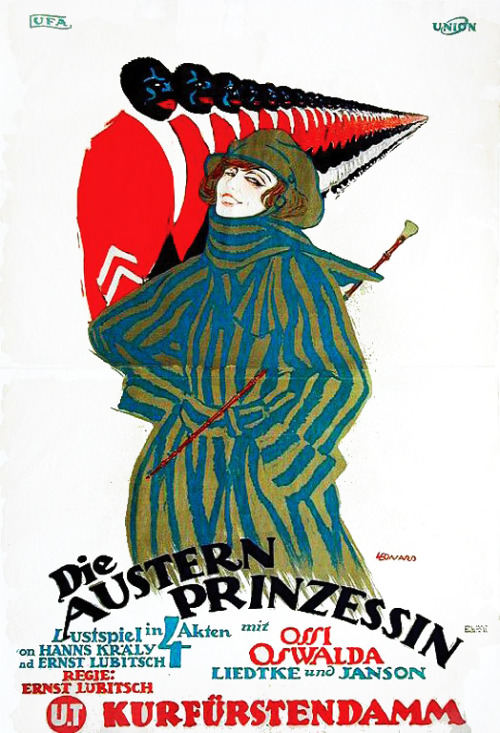


.JPG)



